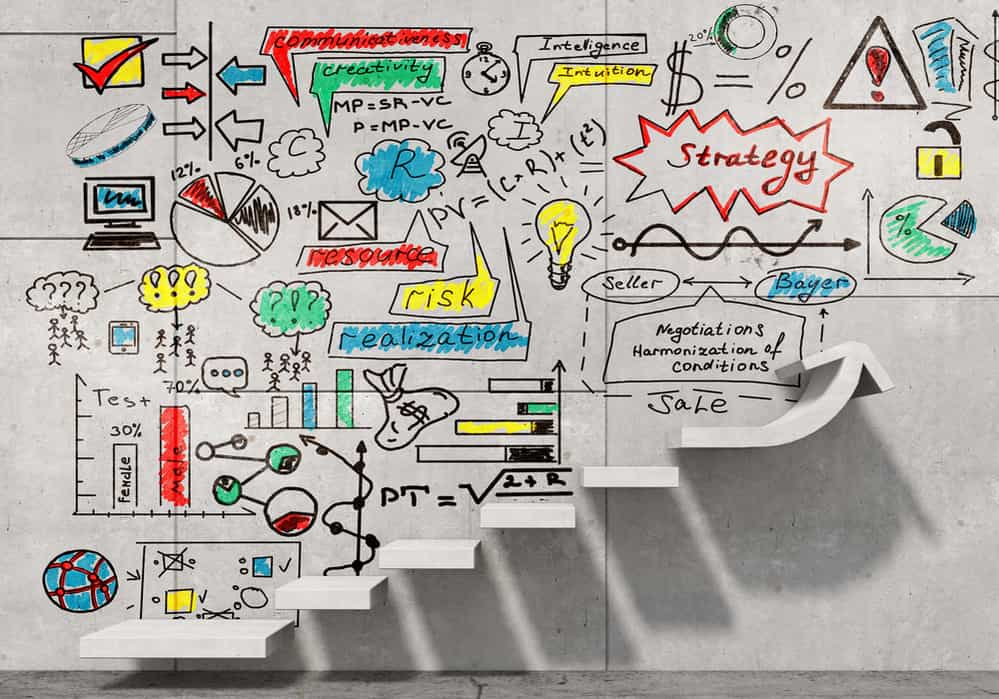Finding the Right Onboarding Buddy, Workflow and System in Your Organization
 Omer Usanmaz
·
8 minute read
Omer Usanmaz
·
8 minute read
Starting a new job can be an overwhelming experience for anyone. The unfamiliar work environment, new faces, and a whole set of processes and procedures to learn can leave new hires feeling lost and unsure. An onboarding buddy is all about using a current employee and assigning them to a new hire to provide support and guidance during their onboarding process. This buddy acts as a mentor, a friend, and a go-to person for the new employee as they navigate their way through the early days of their job.
The role of an onboarding buddy is distinct from that of a mentor or coach. While mentors and coaches focus on long-term development and career growth, onboarding buddies primarily assist new hires in acclimating to their new work environment. They help bridge the gap between what is in the employee handbook and the practical knowledge often shared informally among colleagues.
The onboarding buddy is crucial in improving the new hire's contextual awareness. They help the new employee understand the company's culture, norms, and unspoken social cues. By sharing insights and experiences, the buddy helps the new hire become more confident in social settings and navigate the intricacies of the workplace.
Moreover, onboarding buddies contribute to the new hire's productivity. Providing guidance and answering questions enables the new employee to grasp their role's day-to-day processes and expectations quickly. Regular interaction with an onboarding buddy significantly increases new hires' productivity, with higher satisfaction levels reported by those who had more frequent meetings with their buddies.
Employees with an assigned buddy during their onboarding experience report higher levels of work satisfaction. The support and friendship offered by the buddy foster a sense of belonging and integration into the larger organizational community. This connection helps new hires feel more comfortable and confident reaching out to their colleagues, immediate supervisor, and the broader team.
Onboarding buddies create a positive onboarding experience, which sets the stage for long-term success and engagement. The presence of a buddy demonstrates that the organization values its employees and invests in their growth and development from day one. It fosters a culture of support, collaboration, and continuous learning.
Why does your organization need a buddy system?
A buddy system is a valuable addition to your organization's onboarding process. It offers support, guidance, and a sense of belonging to new hires, helping them confidently navigate their early days. It provides the context needed, boosts internal productivity, and creates a supportive environment where they can hit the ground running. All it takes for an organization to flourish in the first step of the journey together is a planful manager and a dedicated onboarding buddy to ensure your new hires have a successful trip with the company.
How can such a buddy system be executed?
- Prioritize Workload: Considering their current workload, ensure that onboarding buddies have sufficient time to support new hires. If necessary, help reassign or deprioritize tasks to accommodate their buddy responsibilities.
- Communicate Duration: Establish a clear timeframe for the buddy partnership, informing the new hire and the onboarding buddy. Knowing the duration upfront makes buddies more likely to offer their assistance.
- Reporting Structures: Buddies who report to the same manager as the new hire receive more favorable ratings. They are often more familiar with the new hire's role and responsibilities. Aligning reporting structures can prevent frustration and facilitate a smoother onboarding process.
How to create an onboarding program?
Creating a successful onboarding program requires three key ingredients: the right buddy, workflow, and system. Potential buddies are always within the system, but they might be a part of a broader team effort within your company to build for the future. Let's explore how you can develop a practical onboarding program step by step:
The Right Buddy:
Choosing suitable onboarding buddies for welcoming and interacting with new hires is the first part of getting right into an onboarding program. When selecting onboarding buddies for new hires, consider the following criteria based on Microsoft's pilot program.
The buddy should have:
- Sufficient knowledge and provide context about the new hire's role.
- Strong job performance history who can afford to provide some hand holding in the introductory-level tasks.
- Time available to assist the new hire apart from their day responsibilities and managing pertinent resources with a straightforward approach.
You may wonder whether to choose buddies or have employees volunteer. It's a combination of both as they become a part of the key responsibilities in the long run.
The Right Workflow:
Design a program that works to implement a buddy program that requires no significant investment or extensive resources. Start with answering essential questions to design a workflow that suits the needs of new hires and your organization. Here's a sample workflow to guide you:
- Define the purpose of the buddy program, such as orienting new employees, improving retention, satisfaction, and productivity, or providing support in remote-first settings.
- Determine how the program will work, including matching new hires to buddies, ensuring regular meetings, involving managers, collecting feedback, and addressing awkward moments.
- Apply filters to choose the right buddy, considering factors like experience, enthusiasm, strong job performance, interpersonal and communication skills, and availability for orientation.
- Decide on the number of buddies assigned to a new hire, commonly a 1:1 buddy program or multiple buddies inspired by Buffer's approach.
- Determine the duration of the buddy program, which can align with the onboarding period (e.g., 90 days, a year) or be ongoing, especially in remote settings.
The Right System:
Implement and manage the Buddy Program using an internal site and automated reminders to facilitate the process. However, if that's not feasible for your organization, don't worry. The most important thing is to dedicate enough time to meet the requirements of selected buddies and, most importantly, the new hire.
To implement a buddy program effectively, follow this checklist:
- Ensure you have a streamlined process for onboarding buddies and provide them with the necessary documentation and how cultural norms are in the office.
- Consider automating the buddy program using employee onboarding solutions that integrate with communication platforms like Slack.
- Seek expert guidance from onboarding specialists who can help you implement an automated buddy program that aligns with your organization's needs.
What is the purpose of the buddy program?
A buddy program is a way to support new employees during their onboarding process. The program pairs new hires with experienced colleagues who can help them navigate their new roles, company culture, and workflows. The right buddy ideally should have a functional and mentoring level of knowledge about the new hire's role, a strong job performance history, and the time to assist the new engagement in making a few friends in the first few days at the job.
How will it work?
To create a successful onboarding program, you should select the right buddy based on specific criteria and emphasize the program's benefits to encourage more employees to participate. Once you have identified the right buddy, you can create a workflow matching new hires to buddies, ensuring regular meetings, looping in managers, and collecting feedback from all parties involved. The length of the program can vary based on the onboarding period, organizational size, and remote or in-person settings.
While a good way is to work on an internal site and use automated reminders, lean organizations or those piloting the program can use a manual process. However, larger organizations may need manual help scaling and can benefit from an automated solution.
Matching people at the right time with a sustainable buddy program
When organizations hire new employees, they hire for the potential future they unlock together; they can increase the likelihood of creating meaningful connections between buddies and new hires. This, in turn, promotes a smoother onboarding process by fostering rapport, providing relevant support, ensuring cultural alignment, enhancing communication, and boosting employee satisfaction. A smooth onboarding and a well-matched buddy contribute to the new employee's successful integration into the company and long-term engagement and productivity.
Shared Interests and Backgrounds: By considering shared interests, backgrounds, or similar career paths, the matchmaker can connect the buddy and the new hire. This common ground helps to establish rapport and facilitates more accessible communication; companies can ensure a successful onboarding experience that's employee-centric.
Complementary Skills and Experience: The matchmaker can identify buddies with complementary skills and experience relevant to the new hire's role or department. This ensures that the buddy is knowledgeable and capable of providing valuable guidance and support in specific areas, enhancing the new employee's learning and development.
Cultural Fit: A matchmaker can consider the organizational culture and values when pairing buddies and new hires. By considering cultural fit, the matchmaker ensures that the buddy can effectively introduce the new employee to the company's values, norms, and work environment. This helps the new hire assimilate into the organization more smoothly.
Personality and Communication Style: The matchmaker can assess personalities and communication styles to create compatible buddy-new hire pairs. Matching individuals with similar communication preferences or complementary techniques foster better understanding and effective communication between them. This facilitates more precise information exchange and helps the new hire feel more supported.
Mentorship and Learning Opportunities: Besides providing onboarding support, the matchmaker can identify potential mentors within the organization who can serve as buddies. This allows the new employee to benefit from the expertise and guidance of a more experienced colleague, leading to accelerated learning and growth.
How to plan the buddy program by integrating routine meetings?
A buddy program with the right amount of meetings establishes a strong foundation for a smooth onboarding experience. It fosters a supportive environment, facilitates effective communication, and ensures new hires receive the guidance and resources they need to thrive in their new role. Take the time to get into weekly check-in meetings to enable companies to enhance employee engagement, retention, and productivity while promoting a positive and welcoming company culture. In the initial few months, ensure the onboarding buddy program allows flexibility for the people entering the system.
It should ideally provide the following:
- Guidance and Support: Regular meetings provide a dedicated platform for the buddy to offer advice and support to the new hire. The buddy can address any questions or concerns the candidate may have, helping them navigate their new environment with confidence. This ongoing support allows the new employee to feel valued and reassured, fostering a positive onboarding experience, especially when doing unfamiliar tasks.
- Establishing Rapport: Through routine meetings, the buddy and new hire can develop a strong rapport and build a trusting relationship. Open and frequent communication allows the buddy to understand the candidate's unique needs and tailor their support accordingly. This personal connection creates a safe space for new employees to share challenges and seek advice, enhancing their onboarding experience.
- Clarifying Expectations: Regular meetings allow the buddy to clarify expectations and ensure the new hire understands their role and responsibilities. The buddy can help candidates align their efforts and goals with the company's vision by discussing performance objectives, tasks, and projects. Clear expectations reduce ambiguity and enable the new employee to contribute effectively from day one.
- Knowledge Transfer: Routine meetings facilitate knowledge transfer from the buddy to the new hire. The buddy can share insights about the company's culture, values, and unwritten rules, helping the candidate quickly adapt and integrate into the organization. Additionally, the buddy can guide processes, tools, and resources, accelerating the learning curve for the new employee.
- Continuous Feedback: Regular meetings enable the buddy to provide ongoing feedback and support the new hire's professional development. By discussing strengths, areas for improvement, and milestones achieved, the buddy can help the employee develop meaningful relationships within the company's ecosystem that allow the candidate to progress in their role. Constructive feedback and encouragement build the new employee's confidence and motivation, contributing to their long-term organizational success.
Buddies and mentors: How to navigate stressful times together?
Buddies and mentors provide a valuable support system, helping new employees navigate challenges, build resilience, and create the social connections that help them ultimately succeed. Navigating stressful times together is an essential aspect of a buddy program and its integration into a successful team during onboarding. While the critical responsibilities in both vary according to who they are and how they contribute, the increase in satisfaction is an inspiring part of a successful employee onboarding program.
Emotional Support: Mentors and buddies offer emotional support to new hires during stressful times. They provide a listening ear, empathize with their concerns, and offer reassurance. Acknowledging the candidate's feelings and validating their experiences, buddies, and mentors create a supportive environment that helps alleviate stress and anxiety.
Experience and Perspective: Buddies and mentors bring valuable expertise and perspective to the new employee experience. They have likely encountered similar challenges in their career journeys and can share insights on navigating stressful situations. Drawing on their expertise, buddies, and mentors can provide practical advice and guidance to help the new hire overcome obstacles.
Problem-Solving: During stressful times, buddies and mentors can assist new hires in problem-solving. They can help identify potential solutions, provide alternative perspectives, and offer guidance on the best course of action. Collaborating with candidates, buddies, and mentors empowers them to find practical solutions and build problem-solving skills.
Building Resilience: Buddies and mentors are crucial in helping new hires build resilience. They can share stories of their professional setbacks and how they overcame them, instilling a sense of stability and determination in the candidate. Encouraging a growth mindset and emphasizing the importance of learning from challenges, buddies, and mentors help new hires develop the strength to thrive in their roles.
Providing Resources: Buddies and mentors can offer valuable resources to support new hires during stressful times. Whether recommending relevant training programs, providing access to helpful documentation, or introducing the candidate to appropriate contacts within the organization, they ensure the new hire has the necessary tools and support to navigate challenging situations.
Continuous Check-Ins: Regular check-ins between buddies/mentors and new hires are essential during stressful times. These check-ins provide opportunities to discuss any concerns or difficulties the candidate may face, seek guidance, and receive ongoing support. By maintaining open lines of communication, buddies, and mentors can proactively address issues and provide timely assistance.
Make onboarding employees easy, again
An onboarding buddy program is valuable to any organization's onboarding process, and aligning it with company policies is also integral. Creating the proper workflow and system involves selecting suitable buddies, defining program purposes, outlining responsibilities, and determining program duration.
Matching buddies and new hires based on shared interests, complementary skills, cultural fit, personality, and mentorship opportunities enhance program success. Routine meetings between buddies and new hires are crucial in providing guidance, establishing rapport, clarifying expectations, transferring knowledge, and offering continuous feedback.
Buddies navigate stressful times together by providing emotional support, sharing experience and perspective, assisting in problem-solving, building resilience, and providing necessary resources. Continuous check-ins ensure ongoing support and proactive problem-solving.
A well-designed and implemented buddy program promotes employee engagement, retention, productivity, and positive company culture, contributing to long-term success and satisfaction.






